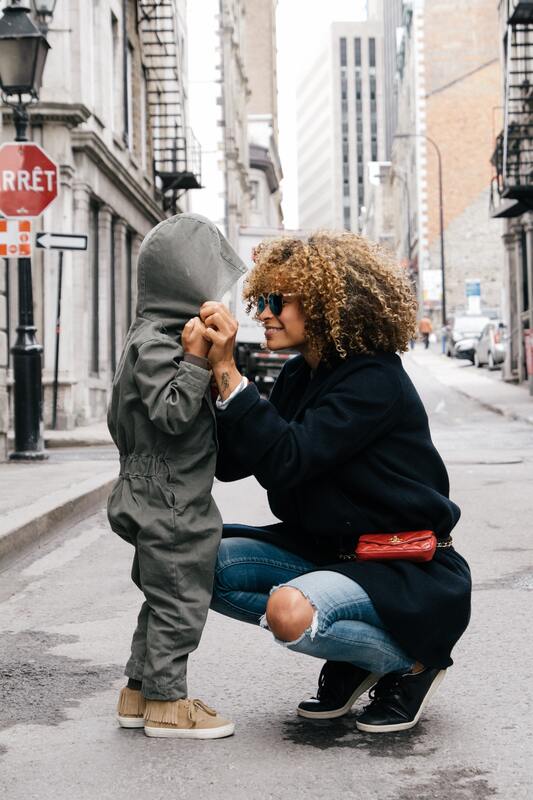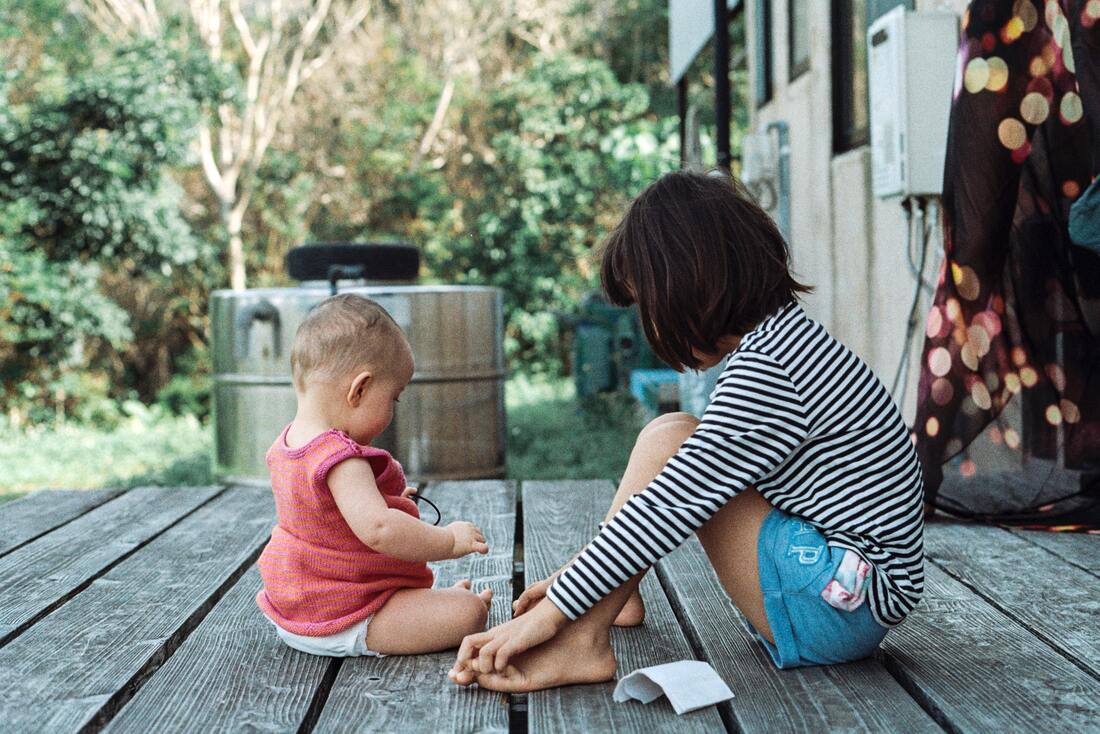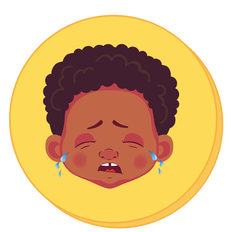DEVELOPMENTAL MILESTONES
|
It’s important to recognize the normal developmental stages for children and to not expect more than what they are capable of. Remember that every child is unique and will develop differently. There are some common (and exciting!) milestones children may reach in this age group, such as showing early signs of puberty, such as voice changes and weight gain, perfecting fine motor skills, understanding cause and effect, and developing more fluent reading skills. Your child may also start to care more about what others think, develop deeper relationships, show interest in having a boyfriend or girlfriend, and explore new ways to be involved and included. Check out the American Academy of Pediatrics for more information on what to expect with school-aged children and when to plan wellness check-ups. Find more information on what to expect during puberty and how to talk to your child about puberty and sexuality. For more information and resources on children’s development stages in the Center for Disease Control and Prevention’s Milestones Checklist for ages 6 – 8 years and 9 – 11 years. |
EDUCATE & EMPOWER YOUR CHILD AROUND BODY SAFETY
Discussing body safety and safe body boundaries in this stage is important as kids are more likely to be in organized sports that require physical exams, visiting friends’ houses for sleepovers, all while their body is beginning to change. Empowering them to know what to expect along the way will help keep them safe and in control.
|
♦ Use the correct names for body parts, including their genitals.
♦ Make sure your child knows the difference between “okay” and “not okay” touches. ♦ Teach children that now that they can bathe and use the restroom on their own, they should not accept such help from adults and older children. ♦ Teach children that it’s okay for them to say “no” if they don’t want to hug or kiss someone, including family, and always respect their decision. |
♦ Teach your child about the “bathing suit” rule: No one can touch the private parts of their body under their bathing suit, no one can ask for them to touch their private parts, and no one should show them pictures of anyone’s private parts.
♦ Educate children about the difference between surprises and secrets. A surprise party is a good, and everyone is happy. A secret that they are told to keep forever is not okay and could hurt people. ♦ Utilize the Body Safety and SPLASH webpages as guides when discussing body safety and safe body boundaries with your child. |
BUILDING SELF ESTEEM
|
When kids enter grade school, understanding and caring what others think of them becomes more prevalent. Building your child’s self esteem early will be something that stays with them for life. Teaching them that everyone makes mistakes and it is okay to fail, as well as how to fix their mistakes encourages them to bounce back after challenges, learn from mistakes, and to be more confident in their actions.
Children need to have a sense of belonging to feel secure in themselves. Supporting them joining a school club or a sports team is one way to ensure your child feels included. This also gives them something to be proud of, continuing to build their self-esteem. Remember, your kids are watching your every move and listening to every word whether you realize it or not. Modeling confidence, accepting your shortcomings, and learning to admit to and apologize for failures teaches your children a deeper understanding of self-esteem, more so than our words can. Learn more from the American Academy of Pediatrics. |
BEHAVIOR & DISCIPLINE
It’s important to have realistic expectations of what to expect at this stage your school-age child will lash out and talk back as they get more opinionated, their hormones are changing, and they are figuring out how to communicate their feelings. Family plays a key role in guiding children on appropriate social behavior and instilling a personal code of conduct that will provide discipline throughout their life.
A few things to remember:
|
♦Praise is a powerful tool.
♦A time-out gives your child time to calm down and learn good behavior. ♦Choose your battles, but try to stay consistent. ♦Avoid physical punishment as it may lead to aggressive behaviors and ultimately damage the parent-child relationship. Instead, utilize positive reinforcement of appropriate behaviors, set limits and consistent rules, redirect misbehaviors, and set future expectations. |
♦Choose your battles, but try to stay consistent.
♦ No child should ever feel defeated and that they are not good enough. Instead of punishing a child when they make a mistake or misbehave, use it as a teaching moment. Take a deep breath before responding and remember that disciplining children is to teach the behavior that is expected, what is unacceptable, and the consequences for misbehaving. The American Academy of Pediatrics provides more resources on navigating those challenging moments. |
IMPORTANCE OF ROUTINES
|
Every family must balance work and school obligations with sports practices, doctor’s appointments, and family fun time. A routine helps to organize life and keep it from becoming too chaotic. Children do best when routines are regular, predictable, and consistent. It can be challenging to establish comfortable, effective routines, but once they’re set, your child will establish more self-reliance, a consistent sleep schedule, and perform better in school. The American Academy of Pediatrics and CDC offer more information on the importance on family routines. |
CYBER SAFETY
We are living in an age where children have never known life without the internet, cell phones, and other electronics. Parents and caregivers have an important role in helping kids learn healthy and safe ways to use technology and be online. Too much screen time can lead to obesity, sleep problems, a decrease in school performance, and an increased risk of cyberbullying and risky online use.
Electronic devices, if used moderately and appropriately, can enhance our daily lives–offering entertainment, educational activities, and more. But, research has shown that face-to-face time with family, friends, and teachers plays a pivotal and even more important role in promoting children’s learning and healthy development.
Electronic devices, if used moderately and appropriately, can enhance our daily lives–offering entertainment, educational activities, and more. But, research has shown that face-to-face time with family, friends, and teachers plays a pivotal and even more important role in promoting children’s learning and healthy development.
Here are a few reminders to ensure safe and healthy electronic use:
|
♦Balance screentime with offline time to encourage unplugged playtime and physical activity
♦Only allow use of screens in common rooms of the house and set “device-free” times ♦Know all of the apps and the functions available on each device, including YouTube, Roblox, TikTok, Snapchat, HIP, Whisper and ask.fm ♦Remind your children to never use their real name in any chat rooms and that once you put anything out there, you can’t take it back |
♦Discuss how to be a good “digital citizen” and encourage your child to tell you if anyone is mean or inappropriate to them while online
♦The American Academy of Pediatrics offers more tips on electronic device use, including creating a media plan with your family and understanding cyberbullying. ♦Exploited Children’s Help Organization (ECHO) offers a Technology Education Program to inform children safe ways to use Smartphones, tablets, iPods, and personal computers and discuss potential risks. |
NAVIGATING FRIEND OR FOE
|
Kids can make lifetime friendships in elementary and middle school, which means it’s the prime time to help them understand the importance of choosing good friends and how to be a good friend. Good friends are those who respect others, follow the rules, and stand up for and help out others.
Bullying is targeted, repetitive, intentional behavior meant to hurt the person either physically, in the form of teasing, or by purposefully excluding. If your child has a run in with a bully, there are some helpful tips to stay safe and address the bully: ♦Take the bully’s power away by staying confident. Kindness always wins! ♦Keep strong friendships who will stand up for each other if faced with a bully. ♦Learn how to ignore the bully and not give them the power to take your fun and joy away. ♦Stand firm and tell it to their face! If your child experiences or witnesses bullying, teach them to tell the bully “I don’t like what you are doing. Please stop it now.” ♦Alert a trusted adult if the situation escalates. |
IS MY CHILD READY TO…
|
Stay home alone?
School-aged kids are more independent and confident and may ask to stay home alone. Before allowing your child to spend after school time or time while you run errands alone at home, they should know the following in case of an emergency: ♦Has access to and knows how to use a phone as well as who to answer/not answer for. ♦Knows what to do and who to call if there is a fire, a medical crisis, a suspicious stranger at the door, as well as where to find the first-aid supplies. ♦Knows how to contact you. Write down rules and responsibilities for the hours your child is home without supervision and hang them somewhere prominent, including: ♦Are friends allowed over? ♦Under what circumstances, if at all, should they answer the door? ♦Which activities are off-limits, for example, are there channels that are off-limits to watching? The American Academy of Pediatrics offers more tips on determining if your child is ready to stay home alone. |
Be a babysitter?
Caring for another child is a big task that takes lots of responsibility, maturity, and patience. If you believe your child is ready to babysit, they should understand the safety rules of staying home alone, as well as: ♦Be prepared for an emergency and call the child’s parents if you don’t know what to do ♦Never leave the children alone in the house – even for a minute ♦Never give the children any medicine or food unless instructed to do so by the parents ♦Talk to the child’s parents about how to respond when the child misbehaves |
Recognizing Signs & Symptoms of Abuse and Neglect
Our trauma-informed Child-Advocate Counselors are available 24/7/365 to consult if you are concerned that a child is exhibiting warning signs. Our Child-Advocate Counselors can be reached by calling 406-586-3333.
|
PHYSICAL ABUSE
Look for any bruising on a baby who is not yet pulling up and taking steps; bruising to the ears, neck, torso, buttocks, or genitals of any child under four years; unexplained injuries on children of any age |
SEXUAL ABUSE
Look for an increase in nightmares and/or other sleeping difficulties, withdrawn behavior, angry outbursts, anxiety, and not wanting to be alone with a particular individual(s). |
FEAR OF TELLING
Children are afraid to tell about their abuse because they feel ashamed, don’t want the abuser to hurt them, don’t want to cause stress for their caregivers, or don’t want their abuser to go to jail. |
Adapted from material by The Face It® Movement, an initiative led by Kosair Charities in the state of Kentucky. For more information visit their website at https://faceitabuse.org/










